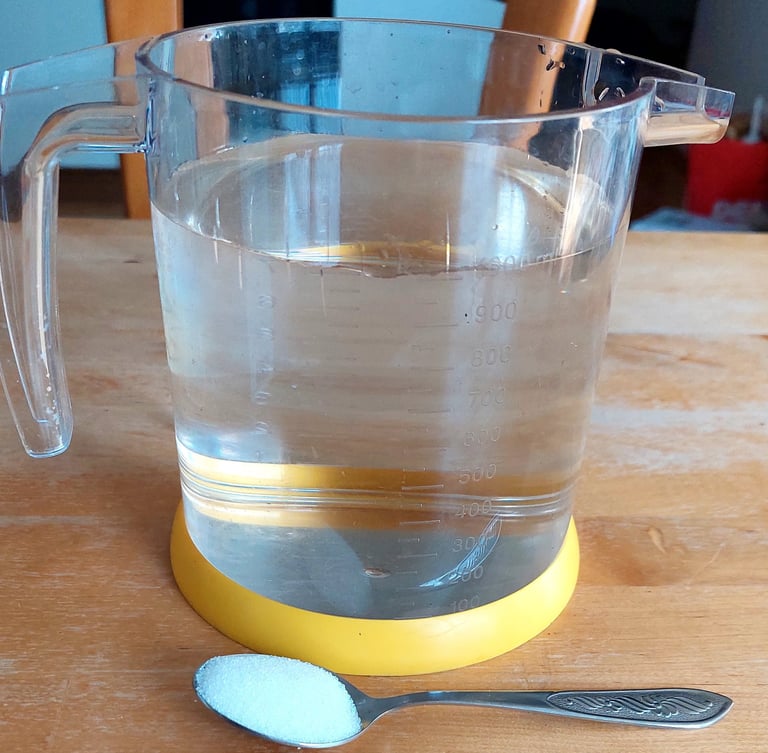Isotonic rehydration fluid 1 - Oral rehydration, WHO - rehydration solution, ORL, ORS
The wonder of water, sugar and salt
3/16/20241 min read


The simplest home recipe is good enough:
1 liter of water
8 teaspoons of crystal sugar
1 teaspoon of salt
Just give it a try! We're talking about "isotonic", meaning the concentration of sugar and salt matches that of our own body fluids. This allows for precise seasoning, and you can add a bit more water, sugar, or salt as needed. Super simple, super effective.
In case of nausea, it is recommended to drink the solution chilled, in very small amounts, practically spoonful by spoonful, with a few minutes' breaks between each.
This solution does not contain potassium – bananas and/or oranges can be eaten with it, or use the second simplest home recipe, the Moro carrot soup, or the pharmacy versions.
Why does it work?
Sodium (table salt, sodium chloride) and glucose (sugar) are actively absorbed into the blood in the small intestine via transporter proteins that work very quickly when both substances are available. The water follows passively. Thus, additional water enters the blood, which we call "rehydration".
When would I consider drinking rehydration solution?
In case of illnesses, especially with fever, vomiting, diarrhea – because we lose a lot of fluid. In heat. With known circulatory problems, hypotension. With muscle tension and headaches. I last used this solution myself with severe headaches and vomiting. When we can eat normally, we only need to drink a lot, since food contains both sugar and salt. However, when this becomes difficult, this solution is a miracle cure.
When would I be careful?
With diabetes, I would definitely want to keep an eye on my blood sugar.
In severe illnesses, venous rehydration (infusion) is necessary. The most effective is when the fluid comes directly into the blood. In emergencies, an infusion is placed in the hospital or ambulance. Through a small puncture, a tiny plastic tube is inserted into the vein, allowing the fluid to come directly into the blood.
